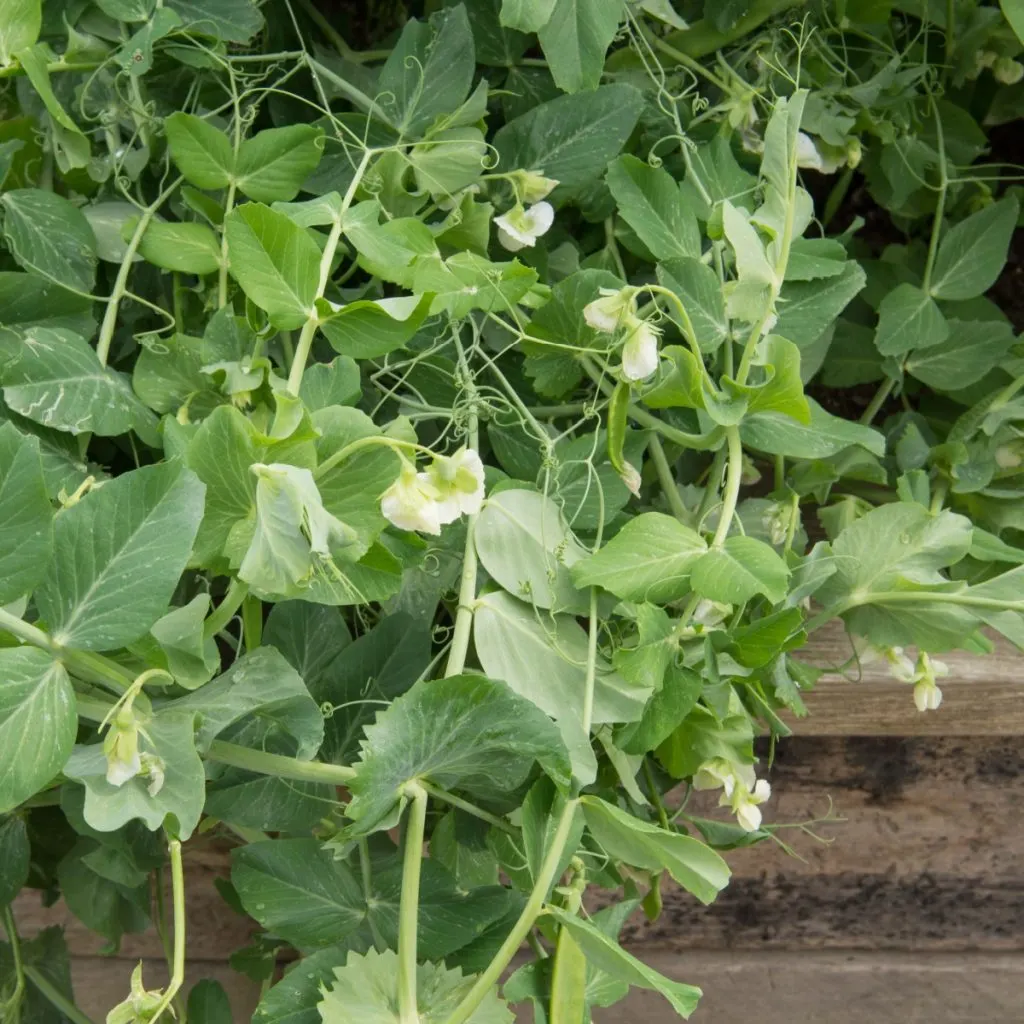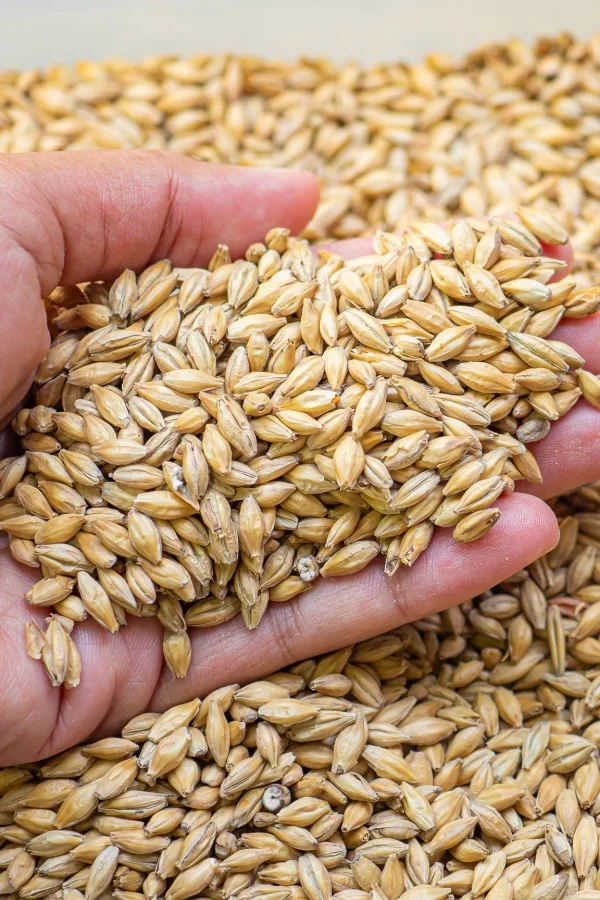Did you know that one of the best ways to recharge your raised beds is by planting a cover crop inside of them this fall? Not only is it easy to do – it also happens to be one of the most inexpensive ways to protect and power your soil all at once!
One thing is for sure, the soil in raised beds starts to become quite weak and lifeless after a full season of growing plants. This is especially the case for raised beds that have a limited amount of soil within them.
Unfortunately, if you simply allow the soil to remain, next year’s plants will not have enough nutrients and resources to grow healthy and strong. Although fertilizers and other additives can help, the soil can still lack the structure it needs to promote plant growth. But that is exactly where cover crops can save the day!

How To Plant A Cover Crop In Raised Beds
Advantages Of Using A Cover Crop In Raised Beds
One of the biggest advantages of using a cover crop in your raised beds is that it helps to cover and protect the bare soil from weeds. When the soil in your beds late in the season, it makes it easy for weed seeds to find a home.
Unfortunately, once the weather warms up in the spring, those same weed seeds germinate and take over. You are then left to deal with pulling weeds all summer long. But a cover crop grows thick to fill in the bare soil – and in the process all but eliminates next year’s weeds as it does!
Cover crops also protect against soil erosion. Harsh winter wind, rain, snow, and even the simple freezing and thawing of the soil can leach out valuable nutrients from unprotected soil.
As a cover crops grow, its thick roots help to hold the soil together while its top growth protects the soil surface. At the same time, its roots are driving deep into the soil to help provide excellent aeration. But where cover crops really come through is in giving life back to tired soil!

Recharging The Soil – How To Plant A Cover Crop In Raised Beds
The biggest advantage of all for using cover crops is that they help to recharge your raised bed soil. After a long growing season, the soil in your raised beds is tired, weak and void of nearly all of the important nutrients plants need to grow.
At a certain point, no amount of additional fertilizer can help weak soil. But a cover crop’s thick roots and foliage are given back to the soil to recharge it with large amounts of organic matter. And that organic matter not only resupplies nutrients to the soil, but also helps the soil structure become stronger as well.
But here is the really good news – by simply selecting a no-till cover crop for your raised beds – you don’t even have to till it under in the spring! You can simply just trim it down – and plant right through it!

The Best No Till Cover Crops – How To Plant A Cover Crop In Raised Beds
Now that you know why cover crops are perfect for growing in raised beds, let’s take a look at some of the best varieties to grow for ease of use and maintenance.
One of the best options are no till peas. As it turns out, the same peas that you plant in the early spring for snacking on are also one of the best cover crops for raised beds. Once spring rolls around, you simply cut back the foliage and allow it to decompose.
What makes peas stand out is that they help to fix nitrogen levels in your soil. This nutrient is vital for the health and production of almost all plants. Using peas to replenish the nitrogen allows you to cut down greatly on adding synthetic fertilizers during the growing season. Affiliate Link: Outsidepride 5 lb. Forage Peas Cover Crop
Oats & Rye
Two other great option are oats and rye. Oats are one of the most economical ones around and thrives in almost any soil condition. They also grow really fast! In fact, oats take as little as 5 to 7 days to germinate, quickly filling in the bare soil before winter arrives.
A hard freeze will kill the crop off. You simply trim it back in the spring and plant right through it. Many gardeners will actually plant a mix of oats and peas to really provide cover and power. Affiliate Seed Link: Peas and Oats Cover Crop Seeds

And finally, cereal rye is another great choice as a cover crop. Like oats, this cover crop also is low-maintenance and grows quickly in most soils. Rye will continue to grow as soon as the soil warms in spring.
To terminate rye, you just need to trim it back a few times in early spring. Like oats, you can then plant right through it. Affiliate Link: Cereal Rye Grain Seeds Open Pollinated Cover Crop
How To Plant Cover Crops In Raised Beds
Planting any of the crops above couldn’t be easier! In the fall, after you remove your plants and all of the plant materials from your raised beds, rake the surface of the soil. Then, simply cast out the seeds evenly onto the soil by hand.
Lightly rake them to set them in place. On average, a 4-foot by 8-foot raised bed will need about one half pound of seed to cover effectively. Lightly water the crop as well after planting but be careful not to over saturate the soil. In no time at all, your cover crop will be up and growing!
Spring Care – How To Plant A Cover Crop In Raised Beds
About 4 to 6 weeks before you want to plant your spring vegetables and seeds, you need to “kill off” the cover crop (unless winter did that for you). Do this by taking a push mower or string trimmer and mowing the plants down short. For smaller raised beds or containers, you can even use handheld grass trimmers.
You may need to repeat this step a couple of times before the plants die off completely. The cut plant material can be left where it lands. It will add nutrients and organic matter back to the raised bed soil as it breaks down.
You can then plant your transplants or seeds right into the bed, all without the need for tilling or fertilizing. Here’s to re-energizing and protecting your raised bed soil all by planting and growing cover crops! For more tips on keeping raised bed soil healthy, be sure to check out How To Recharge Your Raised Bed Soil Over The Winter – For Free!
Simple Garden Life
Follow Our Facebook Page For Even More Great Tips! Simple Garden Life Facebook Page
Simple Garden Life is a website dedicated to keeping gardening fun, simple and enjoyable! We publish two new articles each week along with a new garden podcast episode every two weeks. This article may contain affiliate links.
